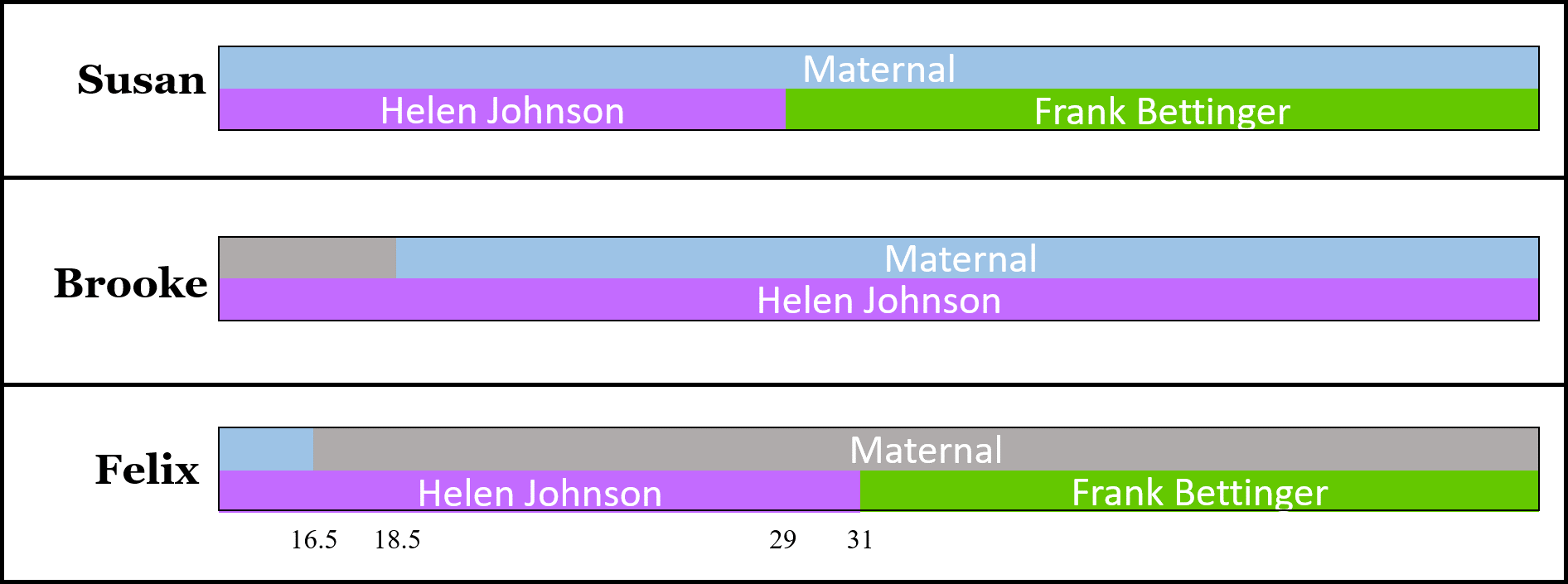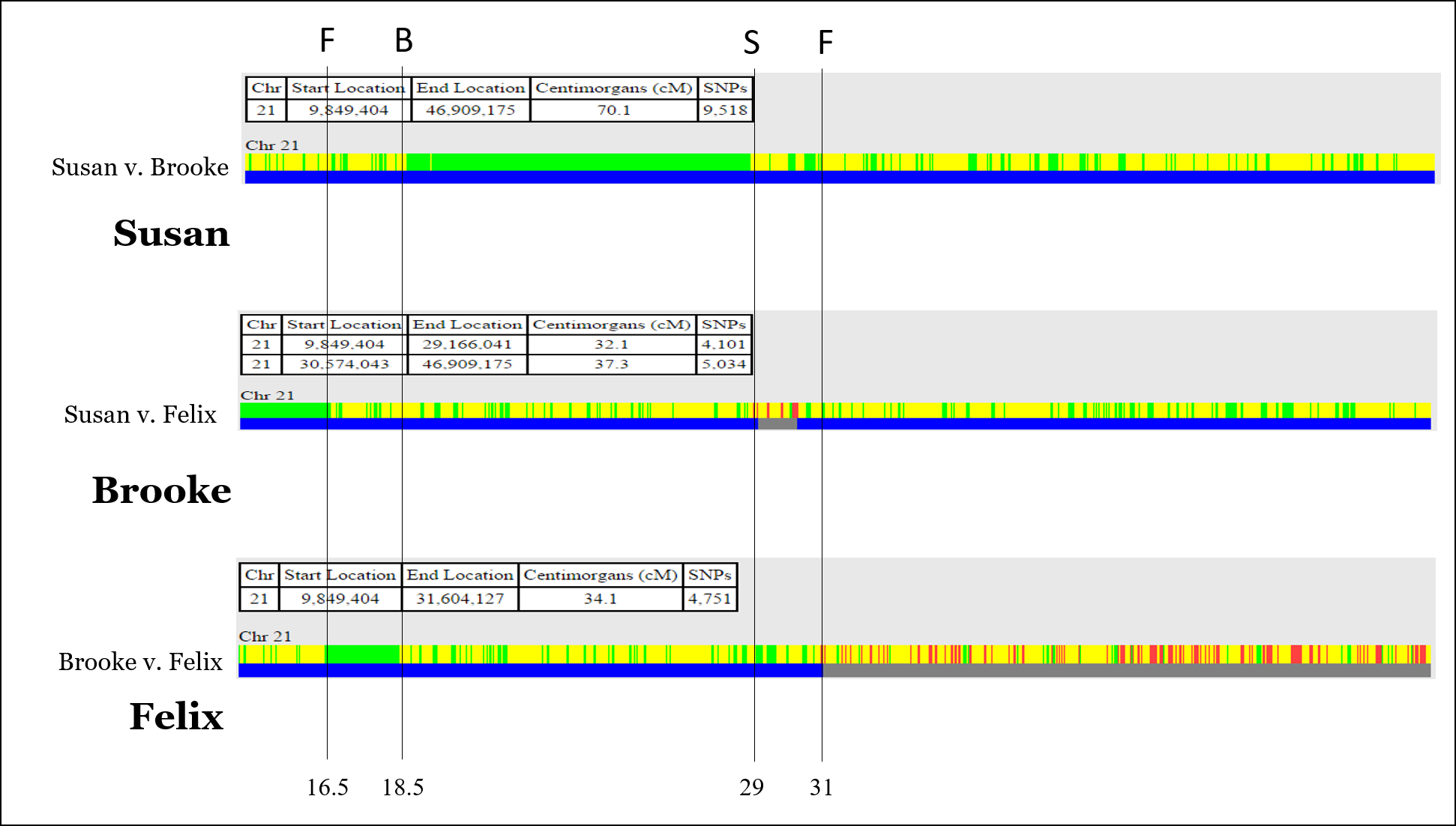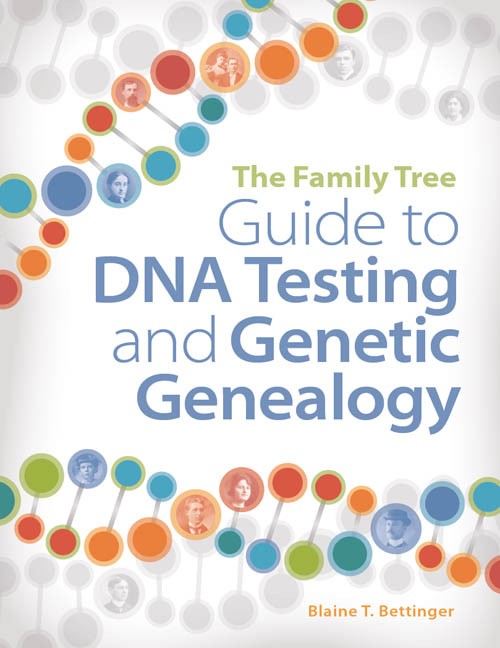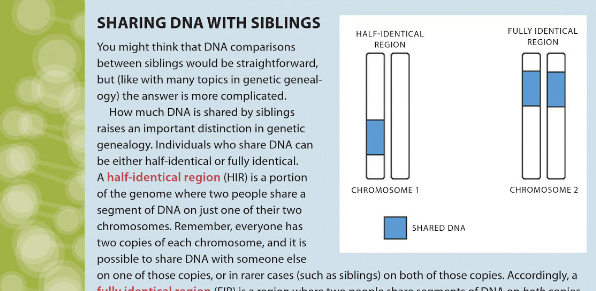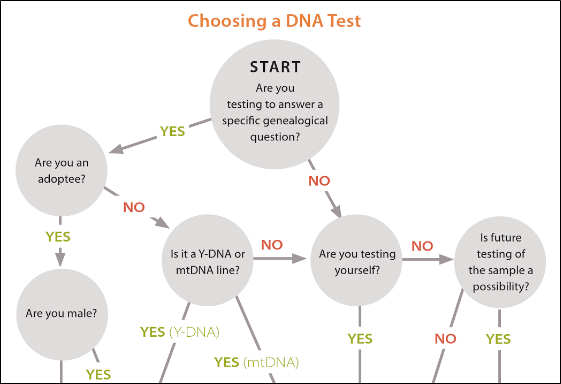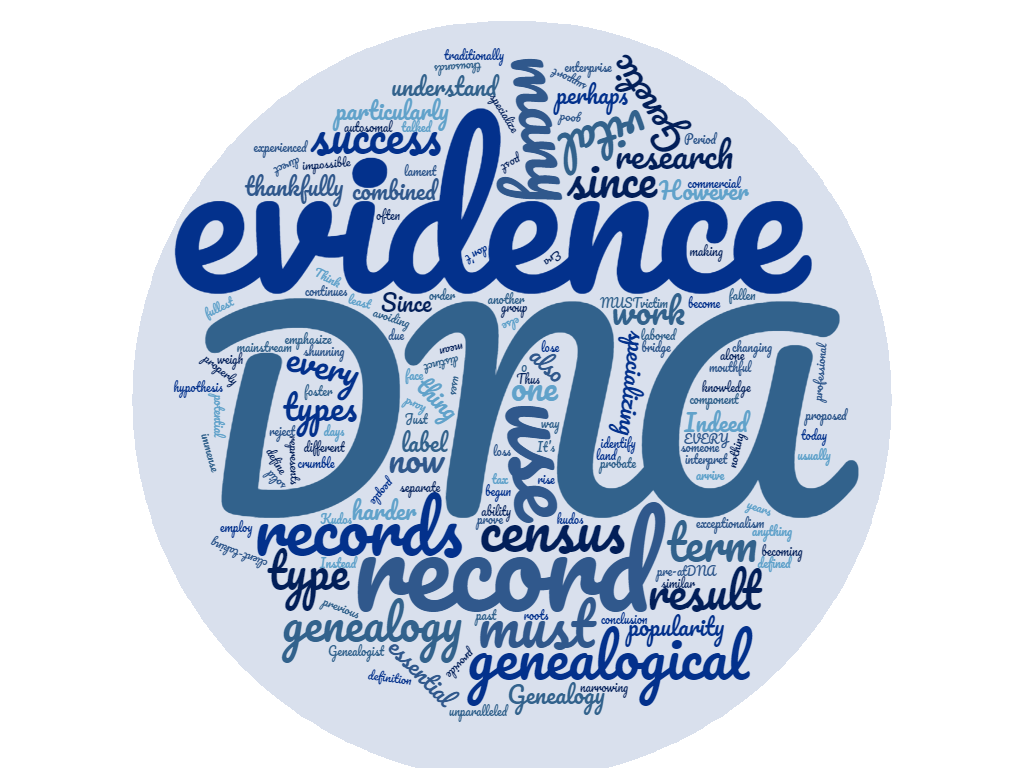 Is there such a thing as a “genetic genealogist” in genealogy today? Should there be such a thing?
Is there such a thing as a “genetic genealogist” in genealogy today? Should there be such a thing?
In a previous post (“The DNA Era of Genealogy“) we talked about how DNA is a record type, similar to a census record, land record, vital record, or tax record. All of these record types provide evidence that – when combined with other types of evidence – support, weigh against, or reject a genealogical hypothesis.
However, DNA alone cannot prove anything; DNA evidence must be combined with other types of evidence in order to arrive at a solid genealogical conclusion. As a result, it is impossible to be a genetic genealogist and nothing else. To use DNA evidence properly (or at least to its fullest potential), one must also be a good genealogist.
